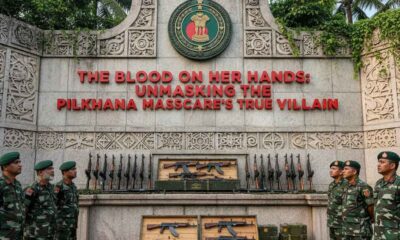Breaking
North Korea Conducts Longest ICBM Test to Date Amid Rising U.S. Election Tensions

North Korea carried out a high-stakes intercontinental ballistic missile (ICBM) test early Thursday, setting a new record for flight time and height, according to reports from Japan and South Korea. This launch, confirmed by Seoul’s Joint Chiefs of Staff (JCS), follows intelligence warnings about a potential ICBM test timed with the U.S. presidential election, set for Tuesday.
The missile, launched from a vertical “lofted angle,” reached an altitude of roughly 7,000 kilometers (4,350 miles) and traveled around 1,000 kilometers (620 miles) before landing west of Japan’s Okushiri Island, just outside Japan’s economic zone. Japan’s Defense Minister, Gen Nakatani, described it as the “longest-ever flight time” for a North Korean missile, raising concerns over potential advancements in Pyongyang’s missile capabilities.
The missile was launched from a mobile, 12-axis transporter-erector-launcher (TEL), likely carrying a solid-fuel propulsion system similar to North Korea’s Hwasong-18. Solid-fueled ICBMs like this enhance North Korea’s offensive capability by offering a rapid launch window with limited pre-launch preparation, posing a challenge for early detection and interception by adversaries.
U.S. and South Korean response was swift. White House condemned the launch as a violation of multiple United Nations Security Council resolutions, calling it an “unnecessary escalation of regional tensions.” South Korea and the U.S. initiated a large-scale air drill, involving about 110 jets, to simulate strikes on potential missile launch sites. South Korea’s Defense Ministry reiterated its commitment to maintaining a state of readiness to counter North Korean provocations.
Growing Russia-North Korea Military Cooperation
launch coincides with heightened concerns over Pyongyang’s increasing ties with Russia. U.S. and South Korean intelligence report a deployment of approximately 10,000 North Korean soldiers in eastern Russia, allegedly training for potential deployment to Ukrainian front lines. U.S. Defense Secretary Lloyd Austin confirmed that some troops had already been seen wearing Russian military uniforms and using Russian equipment.
South Korea’s Defense Minister Kim Yong Hyun suggested North Korea might seek advanced Russian technology, potentially in the realm of tactical nuclear weaponry and ICBM guidance, as compensation for its support. This collaboration has raised alarms in Washington, Tokyo, and Seoul over the potential transfer of sensitive technologies, including reconnaissance satellite systems and nuclear-powered submarine designs.
In a statement following the missile test, North Korean leader Kim Jong Un doubled down on his commitment to advancing his country’s nuclear and missile programs, calling this launch a “necessary military action.”










